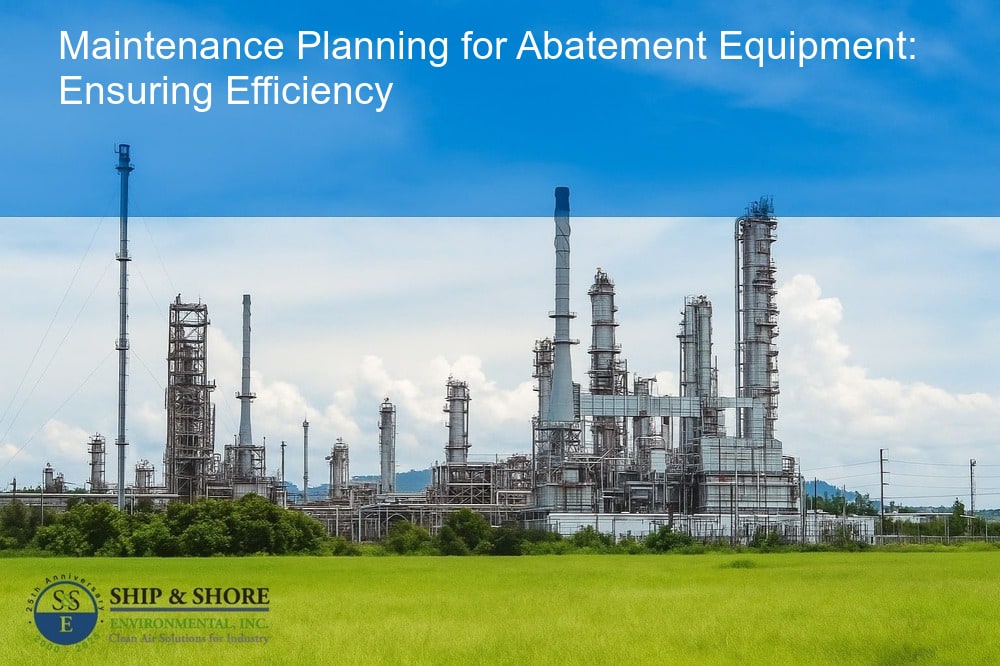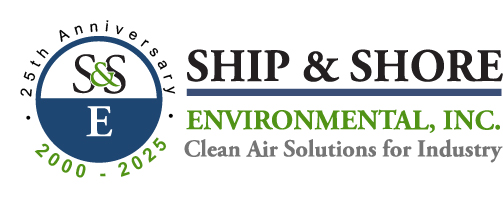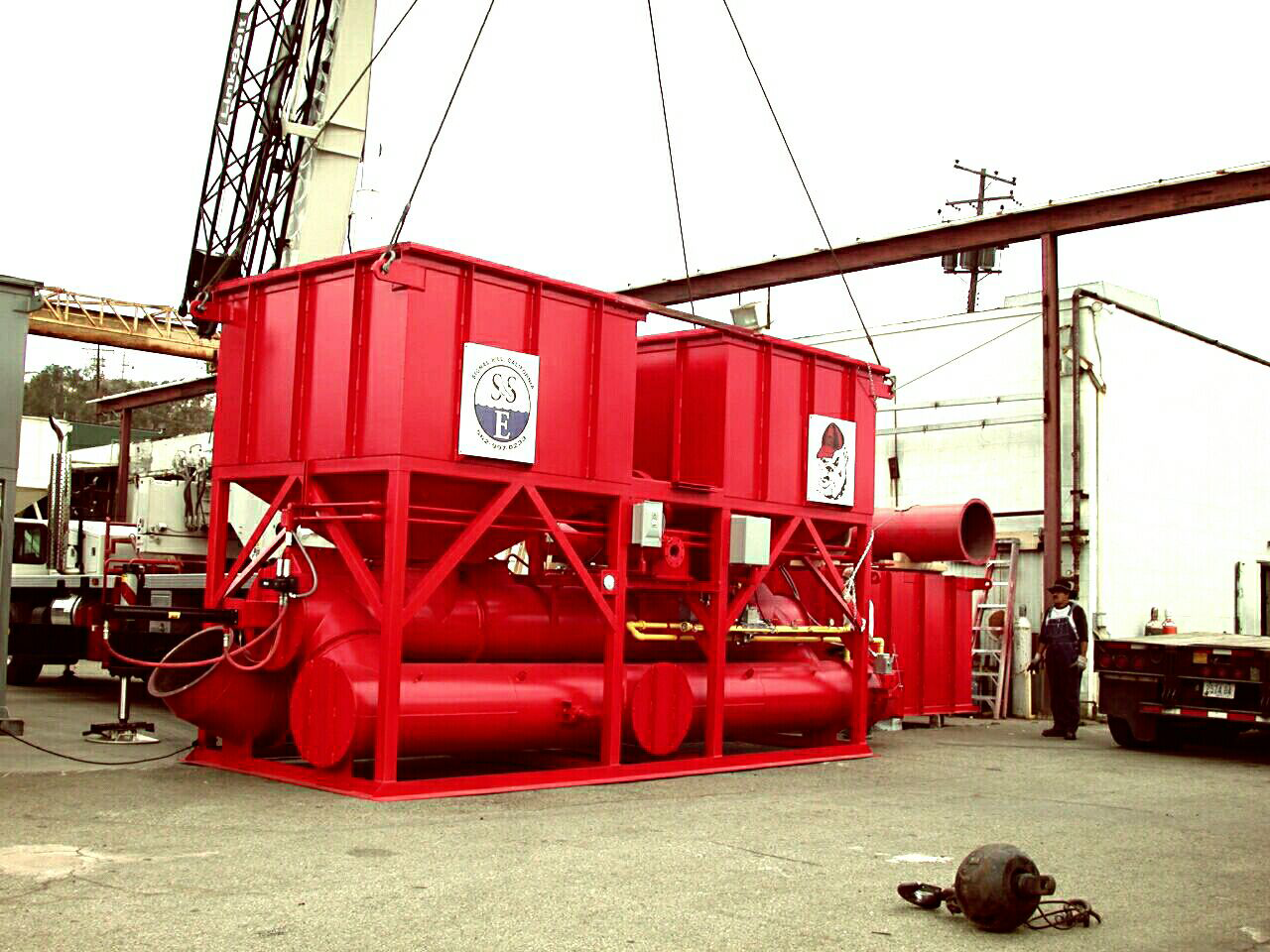
Optimizing Maintenance Planning for Abatement Equipment
October 27, 2025 5:52 amUnderstanding the Importance of Maintenance Planning for Abatement Equipment
In an industry where operational efficiency and environmental compliance are paramount, maintenance planning for abatement equipment stands as a critical pillar. Our dedication to maintaining the optimal functionality of abatement systems ensures that our operations run smoothly and our environmental footprint remains minimal. From preventing unexpected breakdowns to securing regulatory compliance, a well-structured maintenance plan is indispensable for achieving our goals. By prioritizing regular upkeep and timely interventions, we safeguard both our investments and the environment.
Keys to Effective Preventive Maintenance
Preventive maintenance is the cornerstone of an effective maintenance strategy. It involves regularly scheduled inspections and services aimed at preventing failures before they occur. Key elements of a successful preventive maintenance plan include:
- Establishing a comprehensive schedule for routine inspections and servicing
- Training our technical team to recognize early signs of wear and tear
- Utilizing advanced monitoring tools to track equipment performance
- Implementing a robust documentation process to keep track of maintenance activities
By adhering to these principles, we can extend the lifespan of our abatement equipment, reduce downtime, and promote a safer working environment.
Ensuring Regulatory Compliance Through Proper Equipment Maintenance
Regulatory bodies set stringent standards to limit the environmental impact of industrial operations. Ensuring our abatement equipment is well-maintained is essential for compliance with these regulations. Our maintenance planning for abatement equipment includes:
- Regularly updating maintenance procedures to align with the latest regulatory requirements
- Maintaining detailed records to demonstrate compliance during inspections
- Implementing state-of-the-art technologies to enhance emission control
- Conducting internal audits to identify and rectify potential compliance issues proactively
Through diligent maintenance planning, we not only meet regulatory standards but also take a proactive role in protecting the environment.
Detailed Overview of Abatement Equipment Maintenance Planning
Maintenance planning for abatement equipment is crucial for ensuring operational efficiency and compliance with environmental regulations. First and foremost, it involves a systematic approach to scheduling inspections, repairs, and replacements of critical components. Having a well-structured plan not only extends the lifespan of the equipment but also minimizes unexpected downtime.
Effective maintenance planning starts with a comprehensive understanding of the equipment’s operational requirements and potential points of failure. By regularly monitoring system performance, we can identify issues before they escalate into costly repairs or replacements. This proactive approach helps us maintain the equipment’s efficiency and keeps our operations running smoothly.
The Role of Periodic Inspections and Timely Repairs
Periodic inspections are a cornerstone of effective maintenance planning for abatement equipment. These inspections help us detect wear and tear in the early stages, enabling timely interventions that prevent minor issues from becoming major problems. It is essential to adhere to a consistent inspection schedule to ensure that every component of the equipment is functioning optimally.
Timely repairs are equally important. When issues are identified during inspections, prompt action should be taken to address them. This not only maintains the equipment in good working condition but also ensures compliance with environmental standards. Furthermore, timely repairs reduce the risk of equipment failure, which can lead to expensive downtime and non-compliance penalties.
The Impact of Maintenance on Operational Efficiency and Environmental Protection
The impact of a robust maintenance plan extends far beyond the immediate benefits of equipment longevity and cost savings. Well-maintained abatement equipment operates more efficiently, consuming less energy and reducing overall operational costs. Efficient equipment also contributes significantly to environmental protection by reducing emissions and waste.
The importance of maintenance planning for abatement equipment cannot be overstated when it comes to our commitment to sustainability. By ensuring that all components are functioning correctly, we minimize the environmental footprint of our operations. This not only helps us meet regulatory requirements but also enhances our reputation as a responsible and environmentally-conscious company.
- Regularly scheduled inspections
- Timely repairs and replacements
- Monitoring system performance
- Proactive identification of potential issues
- Compliance with environmental regulations
- Reduction in operational costs
Did you know? Regular maintenance of abatement equipment can reduce breakdowns by up to 70% and decrease downtime, enhancing operational efficiency and compliance.
The Long-Term Benefits of Regular Maintenance for Abatement Systems
Investing in consistent and thorough maintenance planning for abatement equipment brings about a spectrum of long-term advantages that cannot be overlooked. A well-maintained system ensures that operations run smoothly, minimizes downtime, and greatly reduces the likelihood of unexpected failures. This proactive approach not only keeps the equipment running at peak efficiency but also contributes to significant cost savings over time.
Realizing Return on Investment Through Maintenance Planning
When we implement a meticulous maintenance strategy, we position ourselves to maximize our return on investment. Regular check-ups and timely interventions prevent minor issues from escalating into major repairs that would incur considerable expenses. Moreover, by maintaining the integrity and functionality of our systems, we extend their lifecycle, thus delaying the need for expensive replacements. This strategic foresight highlights how essential maintenance planning for abatement equipment is to safeguarding our investment.
Future Trends in Maintenance Planning for Abatement Equipment
As we look ahead, the landscape of maintenance planning for abatement equipment is evolving with the incorporation of advanced technologies. Predictive maintenance tools powered by data analytics and IoT are set to revolutionize how we approach maintenance tasks. These technologies can predict potential failures, optimize maintenance schedules, and ultimately enhance system efficiency. Furthermore, integrating our aftermarket services can provide an added layer of support, ensuring that we are always equipped to handle any maintenance needs as they arise.
Embracing these future trends positions us at the forefront of industry standards, allowing us to remain competitive and compliant with stringent environmental regulations. The commitment to ongoing education and adaptation in our maintenance practices will undoubtedly yield substantial benefits, reinforcing the importance of staying ahead of technological advancements.
FAQ
What are the key benefits of regular maintenance for our abatement systems?
Committing to regular maintenance ensures continuous operational efficiency, minimizes downtime due to system failures, and extends the lifespan of the equipment. Consequently, it leads to substantial cost savings and avoids expensive emergency repairs or full-scale replacements. Furthermore, consistently maintaining systems plays a critical role in upholding environmental standards by preventing harmful emissions.
How does maintenance planning contribute to the return on investment for our equipment?
Maintenance planning maximizes the return on investment by preventing small malfunctions from becoming extensive, costly problems. Regularly serviced equipment performs better, uses energy more efficiently, and generally has a longer service life, thereby optimizing the use of our resources. Additionally, we can avoid noncompliance fines by ensuring our equipment meets regulatory standards.
Can regular inspections and timely repairs impact the operational efficiency of our equipment?
Indeed, conducting periodic inspections and addressing repairs promptly can significantly boost the operational efficiency of abatement systems. These practices not only prevent unexpected downtime but also make certain that equipment operates at optimal levels, ensuring the highest environmental protection standards are met. Moreover, this proactive approach contributes to a safer work environment for our employees.
What kind of long-term advantages does our facility realize from diligent equipment maintenance?
Our facilities benefit in various ways from diligent maintenance, including enhanced system reliability, better air quality control, decreased risk of environmental infractions, and overall improved performance of abatement equipment. This, in turn, nurtures a strong reputation for environmental stewardship and operation excellence, vital components for our business success. Moreover, it guarantees our long-term operational sustainability by safeguarding against premature equipment failure.
What are the emerging trends in maintenance planning for industrial maintenance that we should be aware of?
We should keep an eye on predictive maintenance advancements that utilize data analytics and Internet of Things (IoT) technologies. These tools can forecast potential system disruptions and streamline our maintenance schedules, leading to even more efficient operations. Additionally, integrating cutting-edge aftermarket services ensures we have comprehensive support for any maintenance requirement, keeping us at the industry forefront.
Categorised in: Blog

